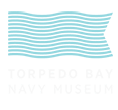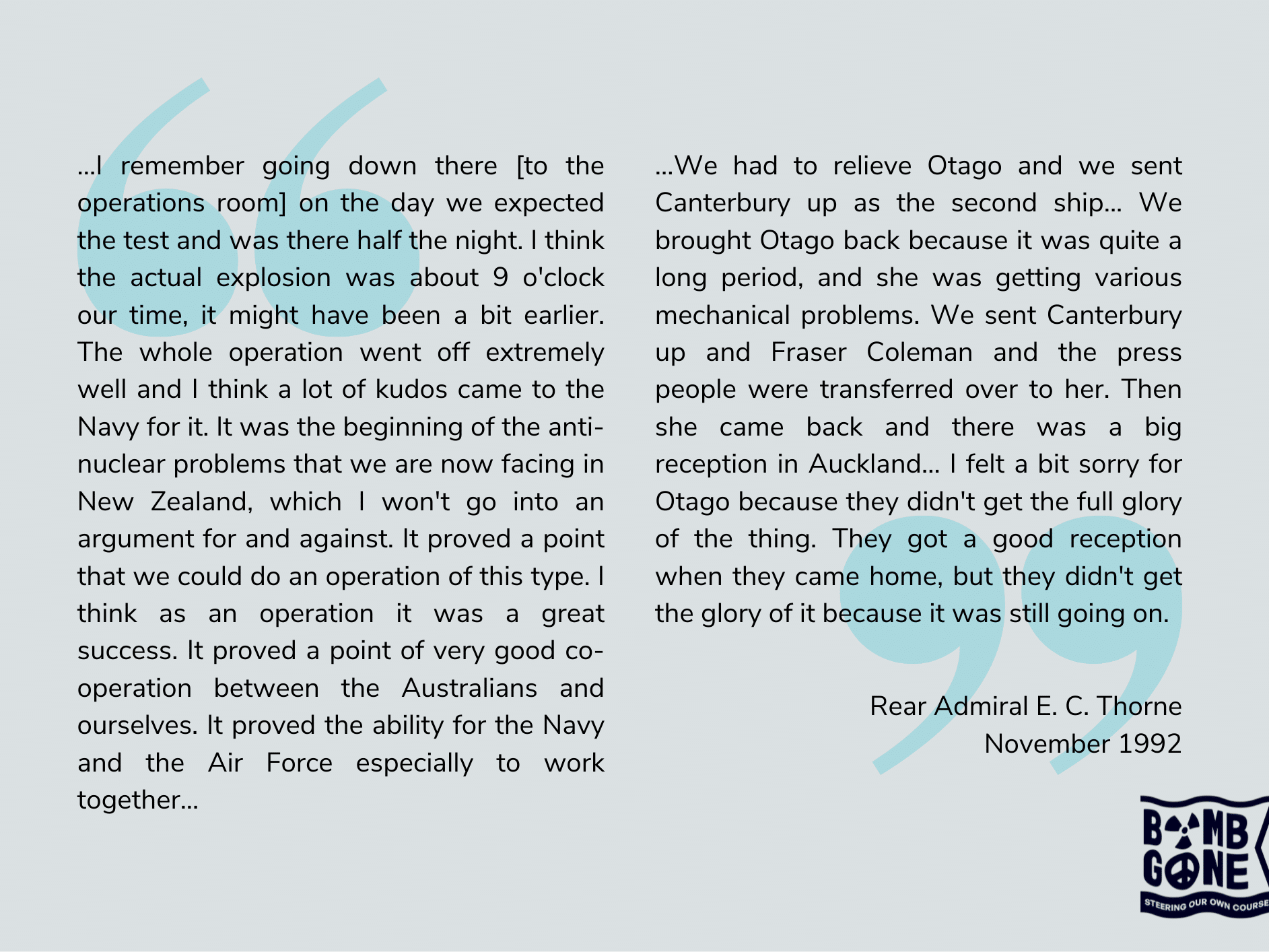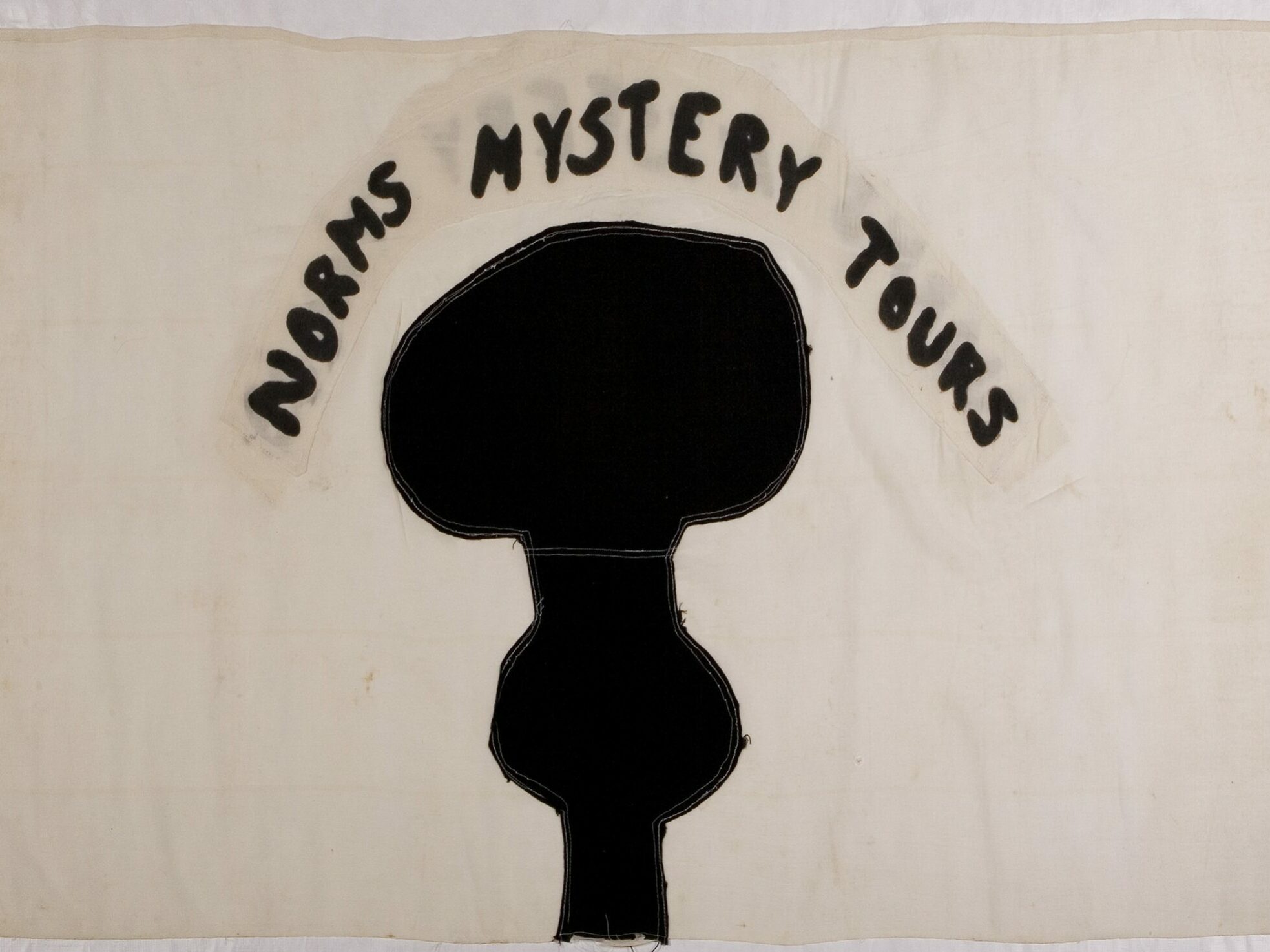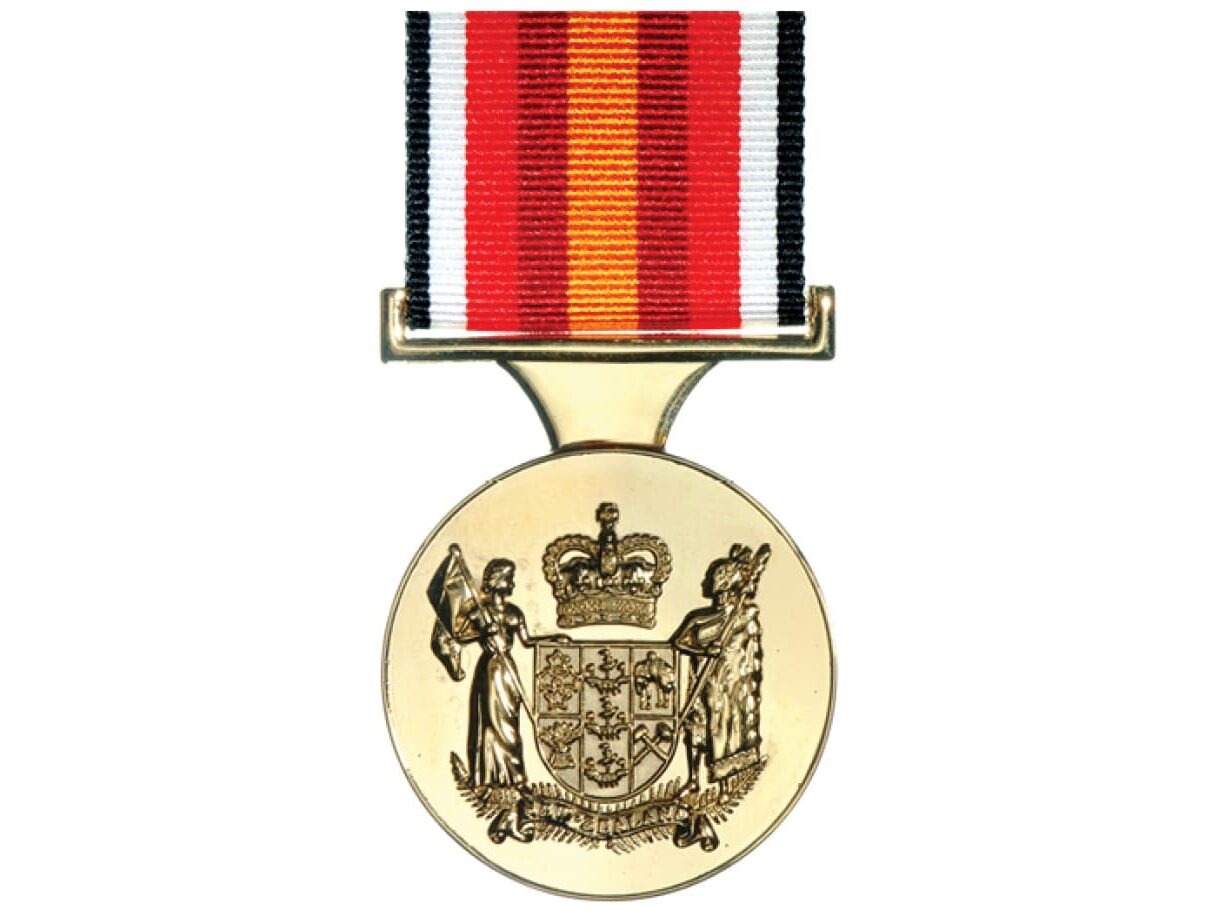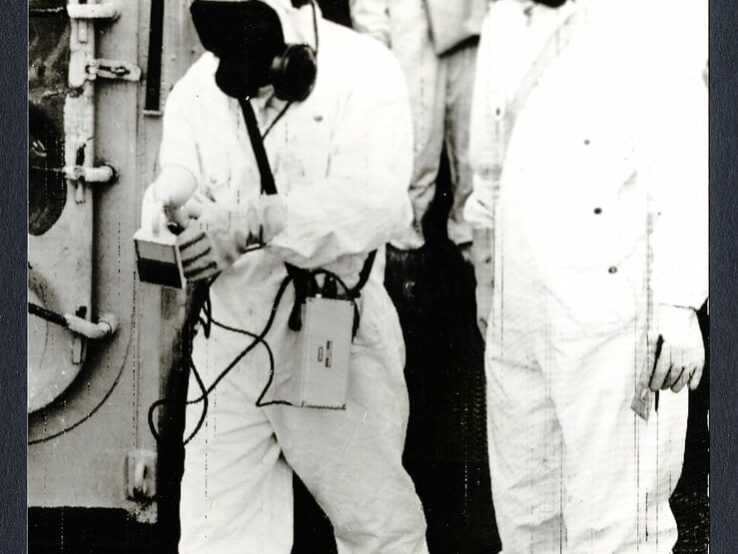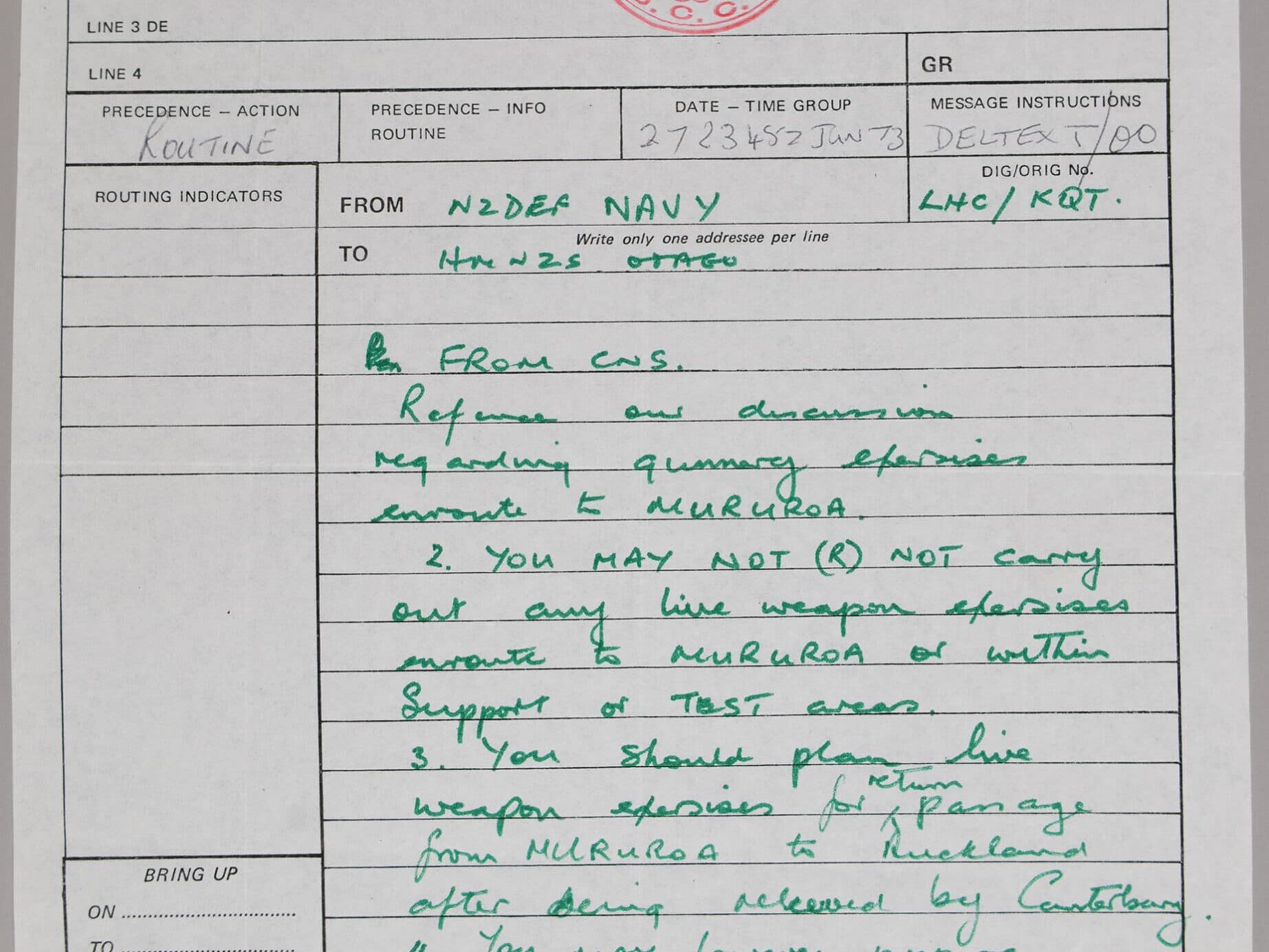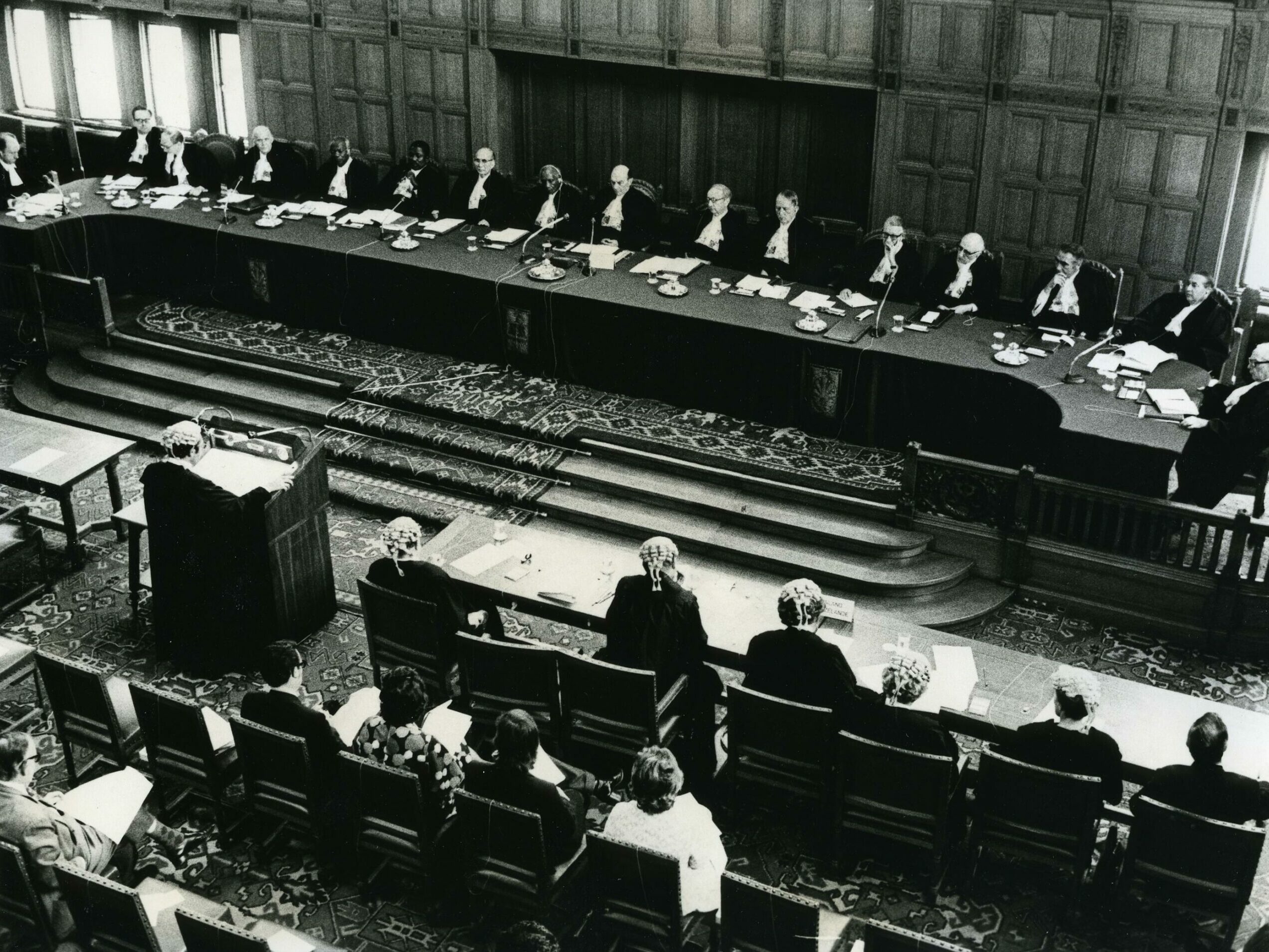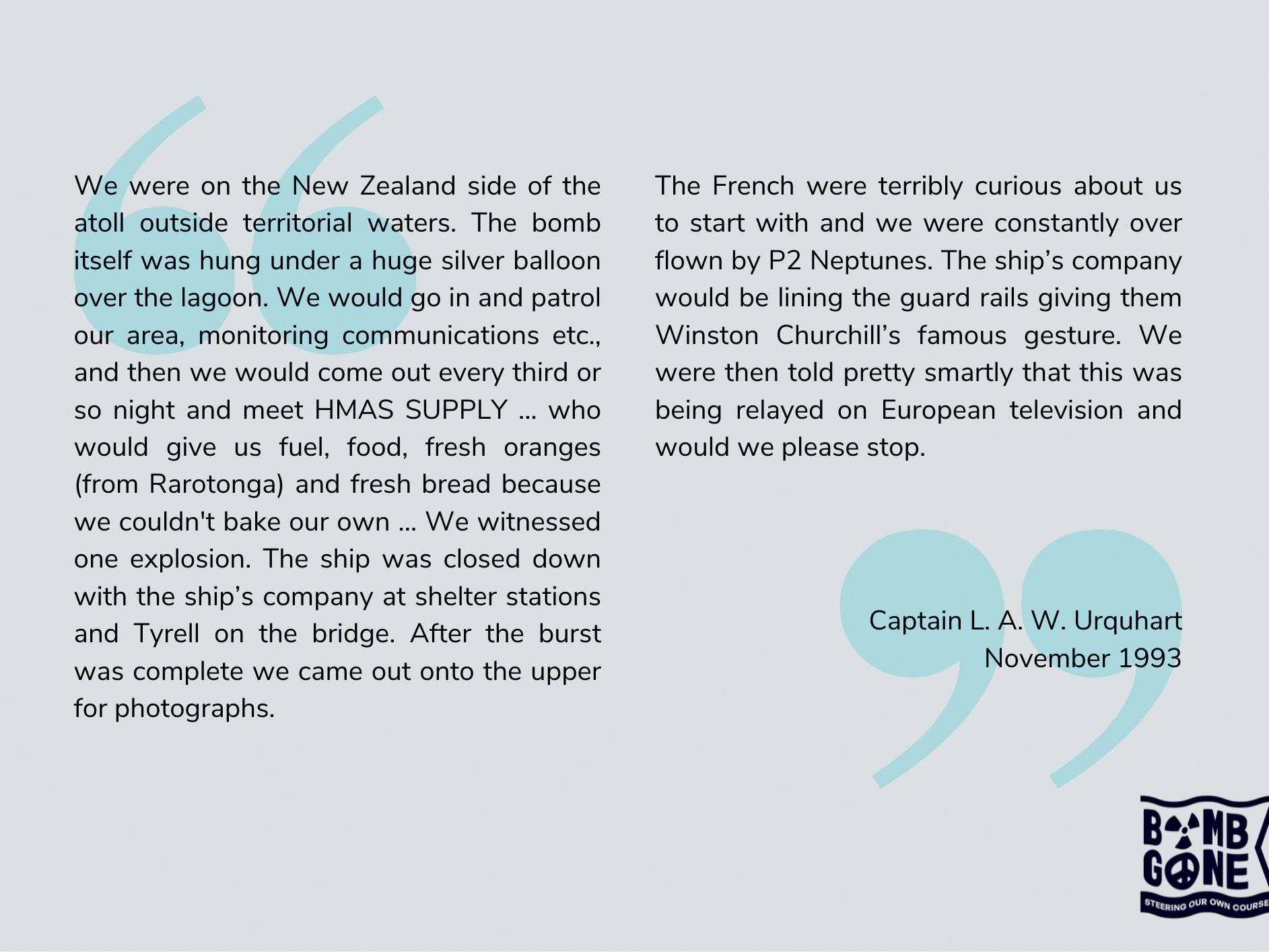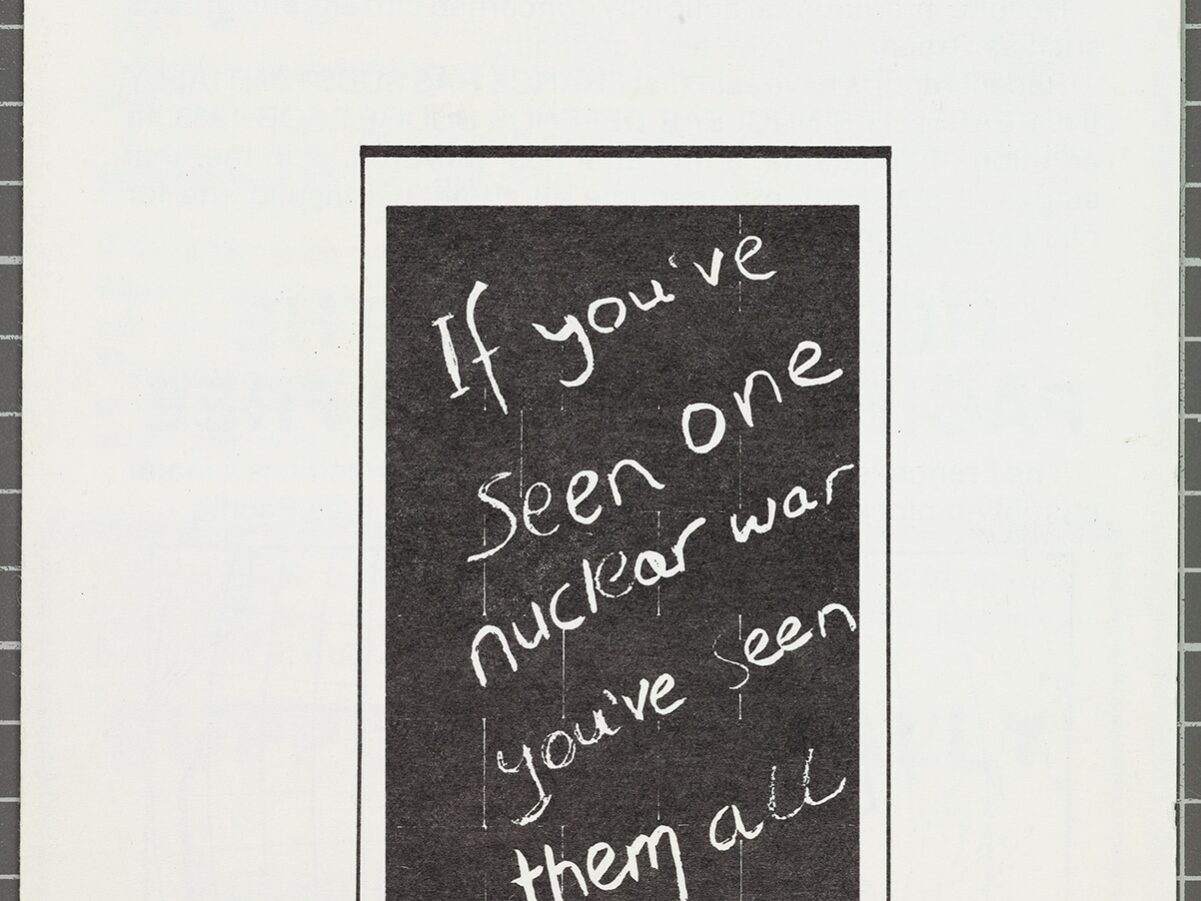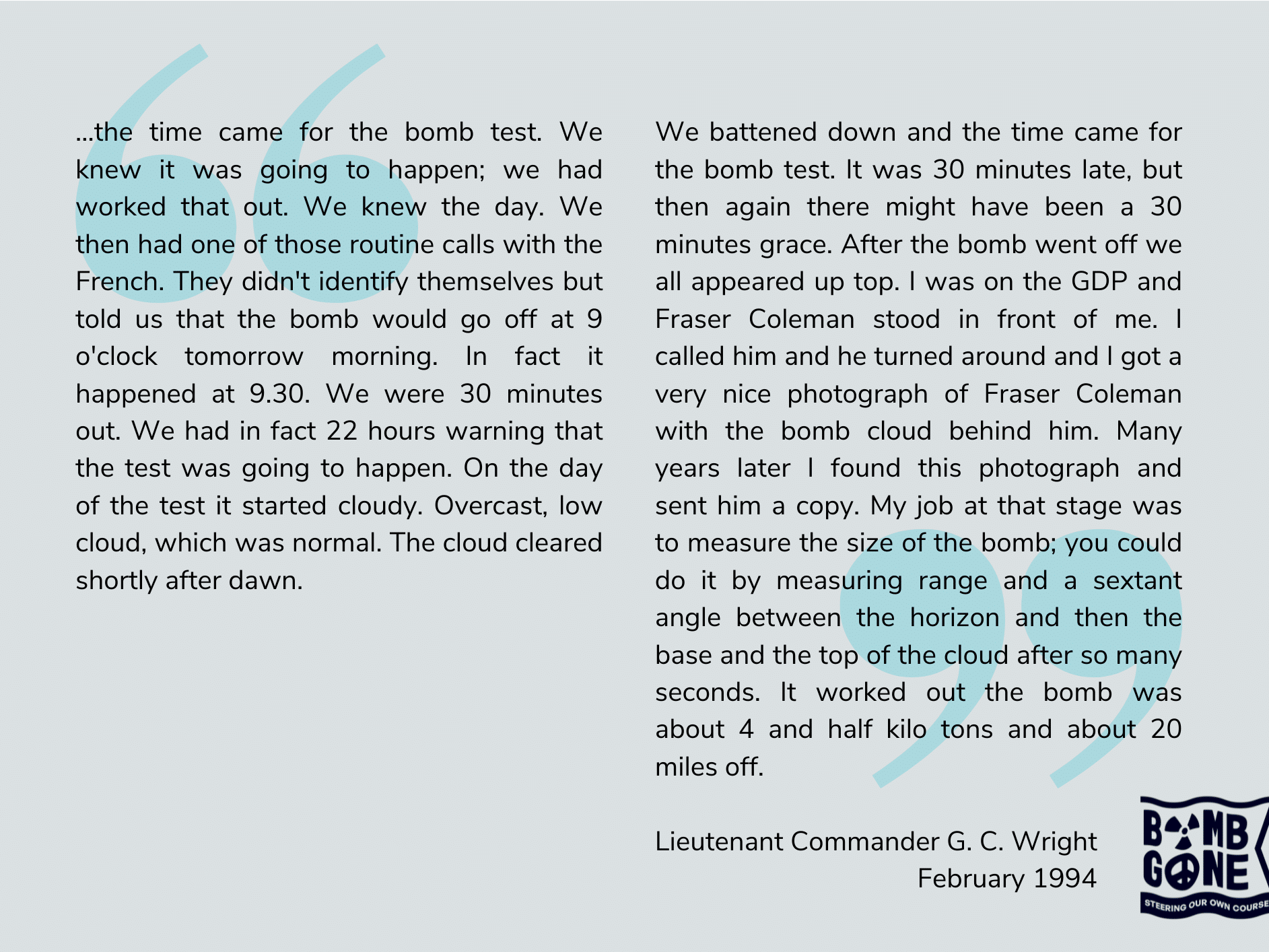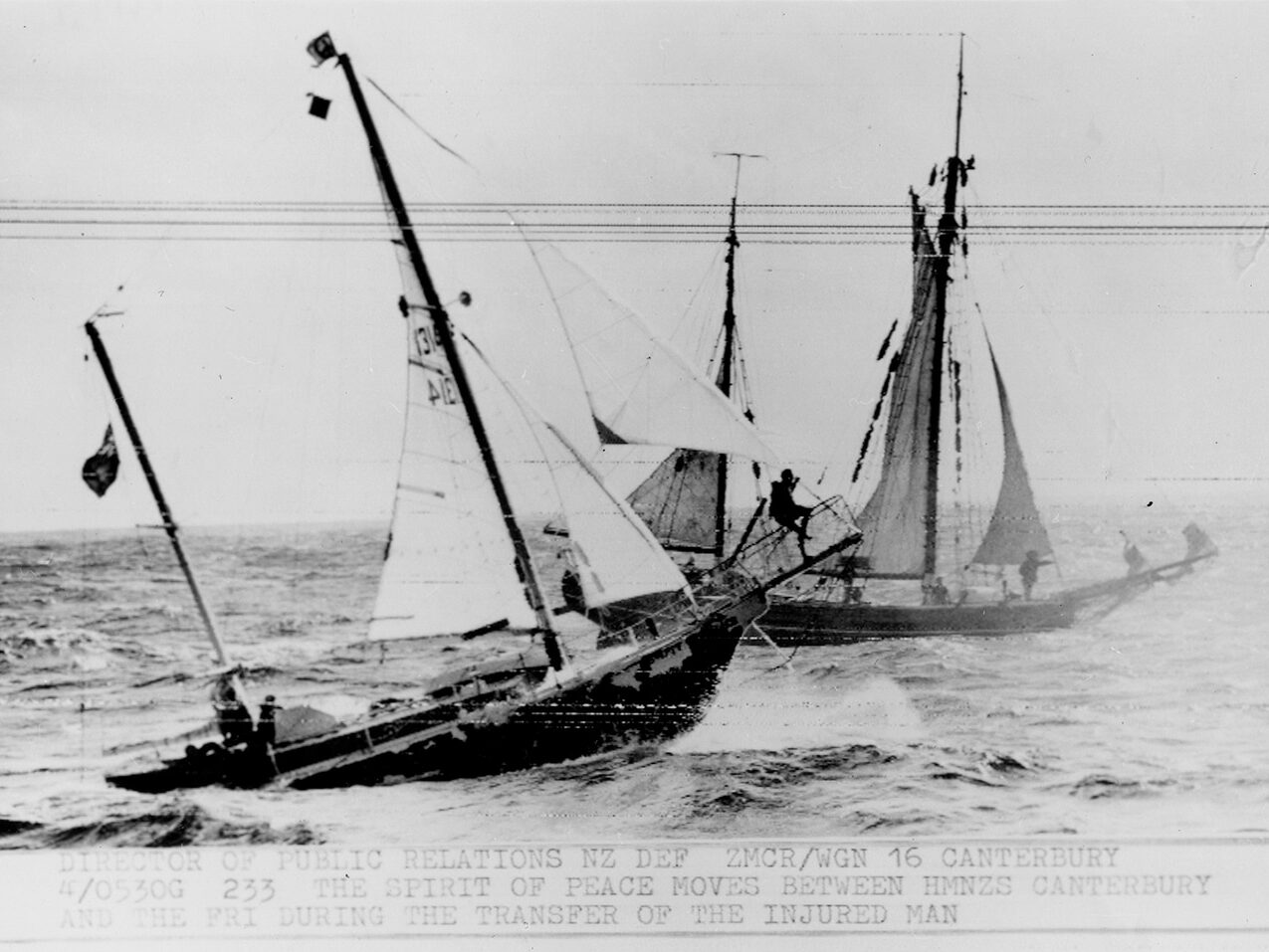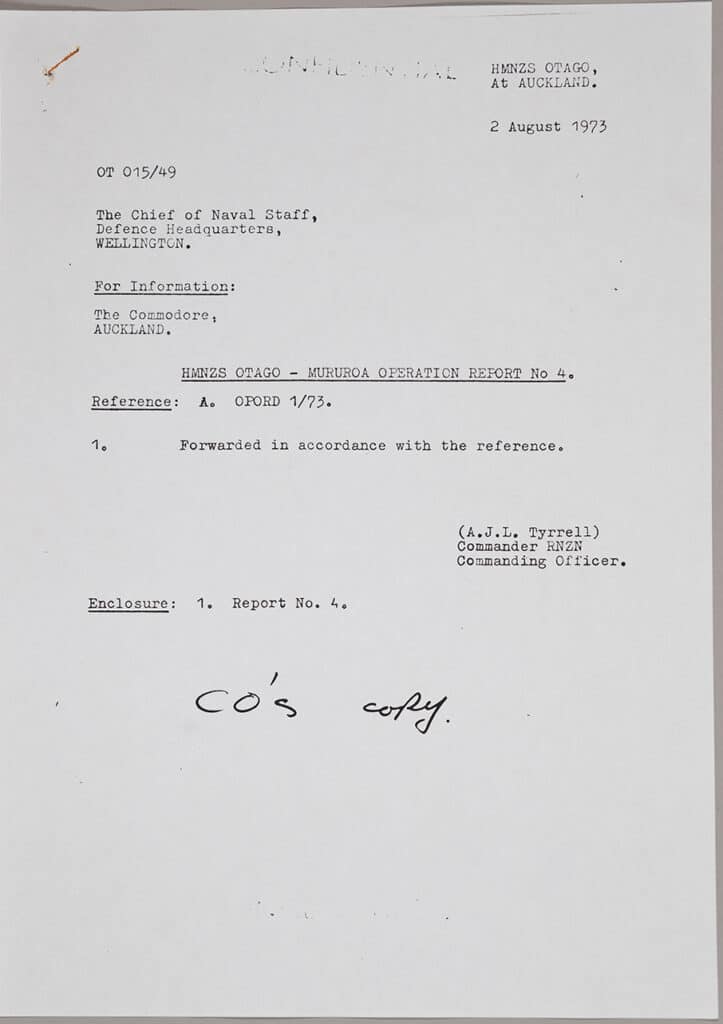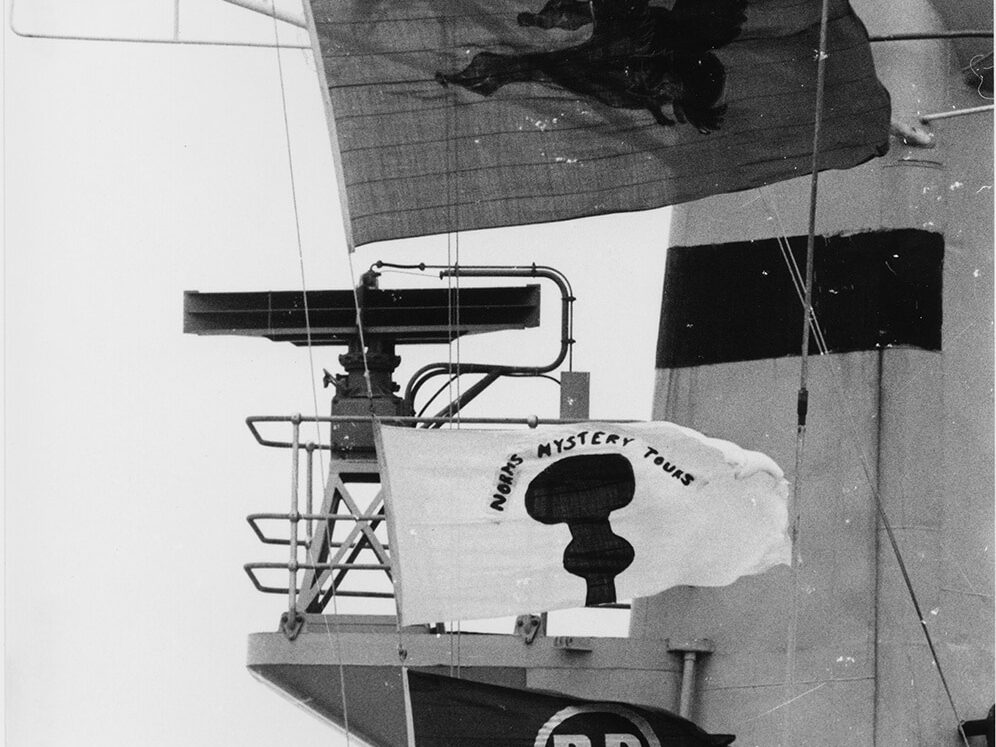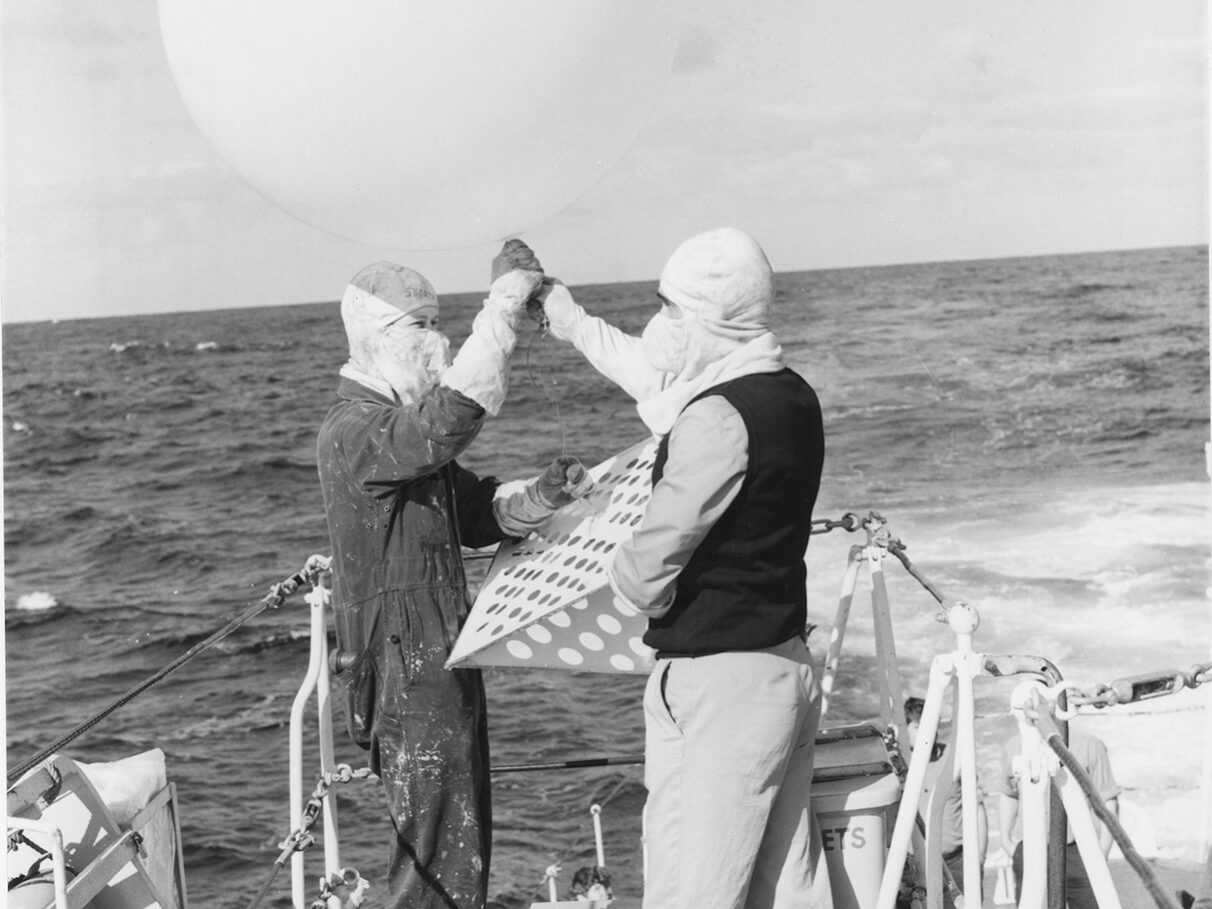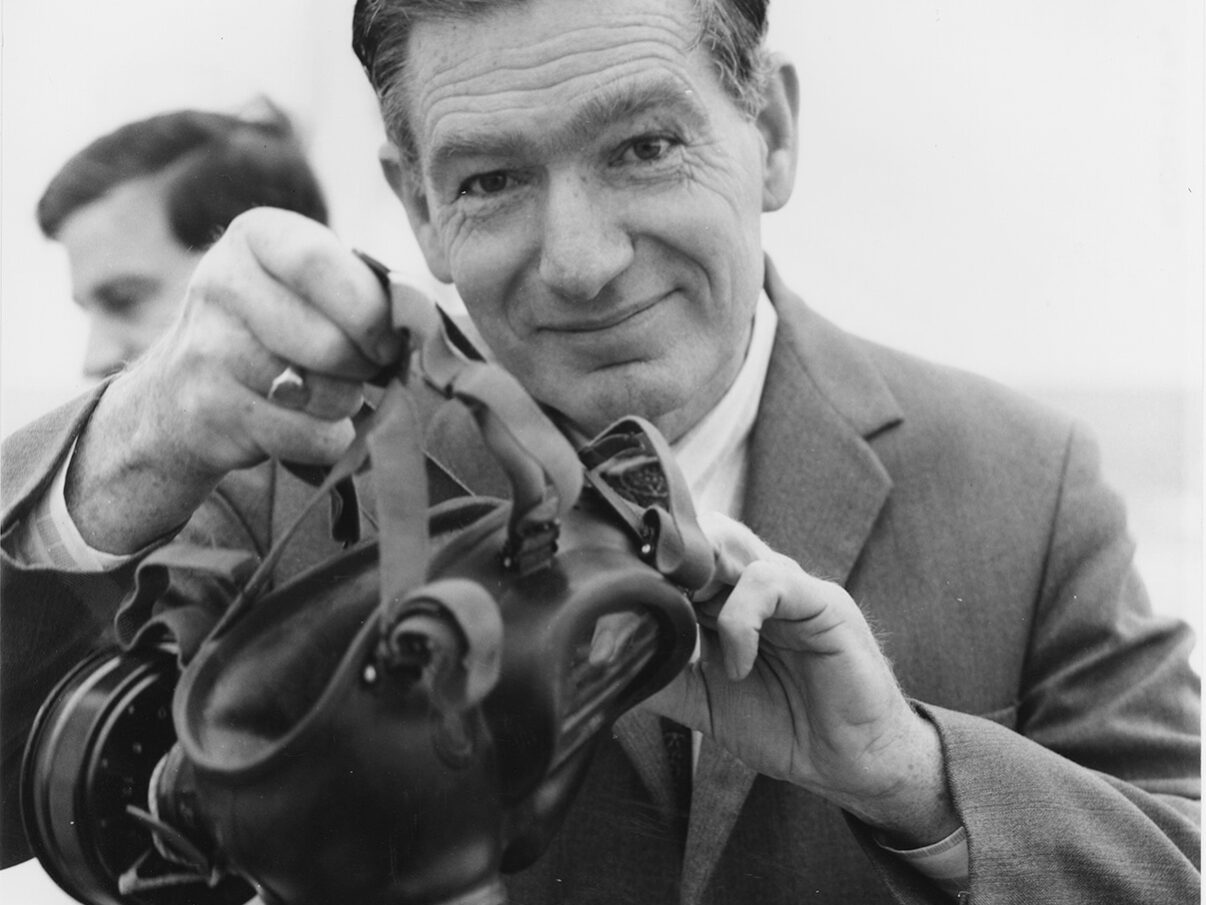The treaty prohibited nuclear testing in the atmosphere, in space and under water (though not specifically underground). Therefore, when France announced it would be undertaking further atmospheric tests at Mururoa in 1973, there was major global concern.
In June of that year, HMNZS Lachlan undertook a covert mission to intercept French communications off Rarotonga. Later that month, Prime Minister Norman Kirk sent HMNZS Otago to Mururoa in direct protest of the testing. Not only was this unusual, it was practically unheard of – a naval warship being deployed in a political protest. A flotilla of private protest vessels also made its way to Mururoa.
Twenty-two naval personnel opted not to go on Otago’s deployment to Mururoa for ‘personal reasons’. Those that went kept the company of Immigration Minister Fraser Colman, who was onboard ship, attending the testing in an observation role. Journalists were also on board, and a large TV camera was installed on the ship. This was used to broadcast an eyewitness account of the testing to an international audience. HMNZS Canterbury relieved Otago in late July.
Explore the resources on this website to learn more about what happened during this time period.
